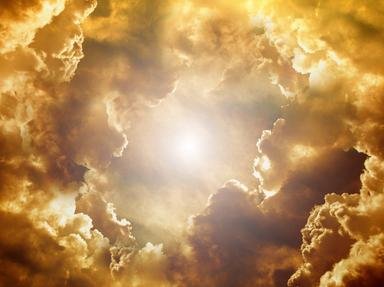Quiz Answer Key and Fun Facts
1. The Sun is at the center of our solar system, but it took some time before we (humanity) figured that out. Who was the first to theorize a heliocentric system, in the 3rd century BCE?
2. How does the Sun create light and energy?
3. Our Sun is classified as a G-type main sequence star, but is erroneously referred to as a yellow dwarf. What is its true colour?
4. The Earth has a diameter of 12,742 km (7,918 miles). Jupiter has a diameter of 142,984 km (88,846 mi). You could fit over 1,300 Earths in Jupiter, and about 1,000 Jupiters in the Sun.
What is the approximate diameter of the Sun?
5. What are the black spots on the Sun called that can be seen by the naked eye?
6. There are three layers to the Sun's atmosphere. Which of these is NOT one of them?
7. Solar flares cause what in Earth's Southern Hemisphere?
8. Solar flares can reach temperatures of up to 100 million degrees Kelvin.
9. The tilt of the Earth works together with the Sun to provide our different seasons. When the sun shines directly on the Tropic of Cancer, what is happening in the Northern hemisphere?
10. The Sun, the Moon and the rotation of the Earth all combine to affect tides. The highest tides come when the Sun and Moon are aligned with the Earth, and when the moon is at its closest (perigee) to the Earth and the Earth is at its closest (perihelion) to the Sun. What colloquial name is given for these rare tides?
Source: Author
reedy
This quiz was reviewed by FunTrivia editor
rossian before going online.
Any errors found in FunTrivia content are routinely corrected through our feedback system.
